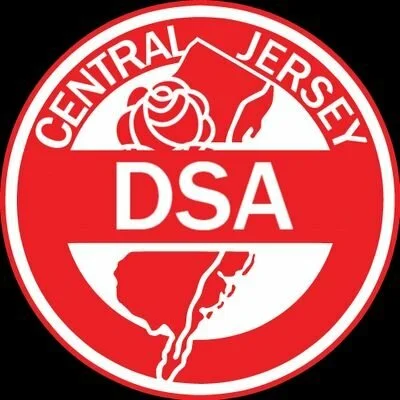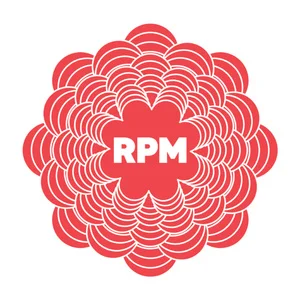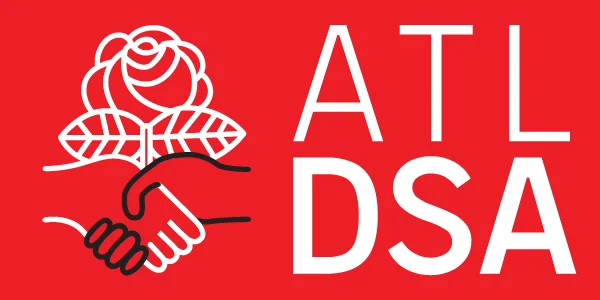

Hello world!
Welcome to WordPress. This is your first post. Edit or delete it, then start writing!


Jackson Water Statement
For decades, America’s water infrastructure has rusted under the negligent eye of politicians who have put politics and dollar signs above their constituents. The water crisis in Jackson, Mississippi reminds us of how racism and capitalist greed can threaten the supply of even the most basic human necessity.
Central New Jersey Democratic Socialists of America calls upon the Biden administration, the state of Mississippi, and state and local governments both in NJ and nationwide to put their money where their mouth is by funding safe and robust water infrastructure as a public utility. Access to water, necessary to sustain human life, should not depend on the profit margins available to private companies for delivering it, nor on emergency funding that is only available once a crisis point is reached. Given the vast wealth of our nation we can easily provide safe and reliable water to everyone as a public utility. This should not be in question, either in Mississippi nor in New Jersey.
The crisis of Jackson Mississippi’s water system is not merely a crisis of underfunding but is also a direct result of the profound ecological crisis wrought on humanity by climate change. Although decades of underfunding from both the federal government and the state government of Mississippi precipitated the failure of the Jackson Water System, notably the need for an additional $4.8 billion to maintain safe drinking water, two events in particular caused the system to fail as catastrophically as it did this september. While the media was largely focused on the failure of the Texas power grid that resulted from the February 2021 cold snap, the lower than usual temperatures also froze the pipes that supplied the water to Jackson Mississippi and damaged them irreparably. The situation was made worse this summer as the system endured damage from the massive floods that swept through Mississippi this summer.
At this point in the climate crisis there can be no debate between adapting to climate change or preventing it; we need to do both. An eco-socialist transition away from carbon intensive production and extraction needs to occur simultaneously with a reworking of our infrastructure to withstand the stress that will be put on it as a result of climate catastrophe or else we will see more cities struggle with the issues that Jackson Mississippi is currently facing.
In addition, the recent water main break in the Belleville area shows alarming parallels to what has happened in Jackson. In August of 2022, more than 100,000 households were affected with reduced water access after a 142-year-old water main ruptured. Like in Jackson, neglected infrastructure was the immediate cause. Contrary to what many would like to believe, New Jersey isn’t immune to images of bottled water packages and closed schools. New Jersey as of this year still has 186,830 discovered lead lines, and potentially up to 350000 from some estimates. Even outside of more momentous events like ruptures, many are forced to choose between risking unsafe water or paying for bottled water. Organizations like Newark Water Coalition still organize to bring to light continued concerns of poor infrastructure and insufficient fixes, especially in Newark where two years ago there was still estimated 24% lead piping.
Further, water privatization is rampant in New Jersey, increasing the cost of water as well as the risk of disasters like what happened in Jackson. For-profit water companies make no sense in a rational world- When a water system is given over to a for-profit company, as is currently planned to happen next year in Somerville here in Central Jersey, that company can make money (its sole objective) from that water system compared to a cost-neutral government-run system in one of two ways: Increasing the price of water for residents, or decreasing the amount spent maintaining the system (risking a Jackson-like disaster). Yet sadly some see it as the only way to fund necessary expansions to supply new houses and rising populations due to the lack of funding available to local governments for water projects.
The defunding of municipal water projects has not only occurred on the state level but was precipitated by cuts in funding on the federal level that occurred during the Reagan Administration as a result of the 1987 Water Quality Act. Republican lead efforts to “shrink government” and “lower the deficit” are not merely philosophical statements on the role of the state in private life or simple adjustments to the accounting on the federal ledger. The “Reagan Revolution” and the ideological justifications for austerity that came with it have had an immensely negative impact on the lives of the most vulnerable members of the working class who often have to shoulder the cost of republican tax cuts for the rich and the decimation of public services that result from them.
We must work within our communities and then expand outwards to recognize how much more needs to be done to repair the situation we are dealing with. Addressing poor piping in general, lead piping especially, fighting back against privatization and the usage of these crises to further increase exploitation are all incredibly necessary. As with many concerns, the solution is to build the power and organization of the working class, so we can address our social interests and concerns in ways capitalists will not. Groups like Newark Water Coalition, Food and Water Watch, and ecosocialist caucuses within DSA are working to build a movement for a more sustainable and environmentally sound world and organizing for water justice is an essential part of making the urban areas where most working class people live safer and healthier.
The post Jackson Water Statement appeared first on Central NJ DSA.


Get Out to Vote!: Union Elections with Brandon Mancilla and Amy Wilson
It’s election season again! That means that citizens will soon exercise their right to vote for their political leaders, but for workers in a union, or for those trying to organize one themselves, democracy does not end on election day. It is in the everyday struggle for a democracy worthy of the name not only in our politics, but in our workplaces and our unions. Tonight, we hear from Brandon Mancilla, a candidate for Regional Director of the UAW’s Region 9A, about what’s at stake in the UAW leadership elections this November and about how he and the other endorsed candidates of the UAW United Members United slate will transform the near century-old union. We also hear from our own Amy Wilson, host and producer here at RPM and a worker-organizer at the Trader Joe’s in Williamsburg, on organizing an independent union with Trader Joe’s United and what it means to lose an election.
Brandon Mancilla on Twitter: @Brandonfor9A

Georgia Voters Face a High-Stakes Test

Elections are underway in Georgia. While Senator Warnock fights to represent Georgia in Congress and hundreds of state legislators wait for polls to close on November 8th, voters are also choosing between candidates for statewide executive offices like Governor, Attorney General, and Labor Commissioner. One race, however, demands special attention.
Alisha Thomas Searcy is the Democratic nominee for State Schools Superintendent. But you might not know it, because she’s been left off of the Democrats’ “One Georgia” slate and campaign literature. She’s even made public posts on social media complaining about the other Democratic nominees. Beyond intra-party politics, teachers’ organizations like the Georgia Association of Educators have even endorsed her Republican opponent over her. So what’s going on with Ms. Searcy?
Searcy and Charter Schools
Searcy proudly displays on her website that she is “working to create an educational system where parents feel empowered, and educators feel supported.” While this is a fine sentiment on the surface, “empowering parents” is too often a dog-whistle for pro-corporate “educational reform” like privatizing public schools, giving public funding to charters and vouchers to private schools, and replacing elected school boards with privately-owned, unaccountable companies. Digging deeper into Searcy’s experience as an “educational leader” gives weight to such concerns for supporters of public education.
A well-resourced public school creates wide-ranging positive effects in a community. By providing quality education, meals, after-school extra-curriculars, public meeting spaces, and stronger links between residents and local governments, public schools benefit both children and adults through their programs and resources. Public schools must provide free and adequate education to every child, regardless of financial, transportation, or ability needs. Public schools are also one of the most consistent and universal employers in the country, and they exist in every county. In short, public schools are the anchor of a local community, and help to ensure everyone gets what they need.
So when Atlanta’s wealthiest, such as millionaire real estate developer Tom Cousins, advocate for tearing down public schools and replacing them with privately-managed charters which suck up public funding, there’s a reason. Such a move presents countless opportunities for big money to remake a neighborhood from the ground up. Charter schools are popular with the real estate industry as they jack up property prices. This is why charter school allies and lobbyists are funded with millions of dollars of industry money, and why many charter school management organizations share headquarters with big property management firms.
So what does all of this have to do with Searcy’s challenge for Superintendent? In her time as a state legislator, Searcy co-authored a state constitutional amendment to revive the State Charter Schools Commission, which was previously ruled unconstitutional by the Georgia Supreme Court. Aside from offering a way for charter school lobbyists to side-step locally elected school boards for approval, this Commission has the authority to deduct money from school district budgets. In short, it’s a great way for the rich and powerful to ignore a community’s representatives through insider politics.
Searcy also claims to have experience as an “educational leader”, but not in the classroom or even in a public school setting. Instead, her website states she was the administrative director of Ivy Preparatory Academy. An op-ed by Athens-Clarke County Commissioner Russell Edwards digs into some of the controversies surrounding her tenure there, including her overseeing of mid-semester teacher layoffs and the conflict of interest inherent in the school’s hiring of her. Beyond her own record, her involvement in the charter network’s administration shows her disregard for the larger communities in which a school is rooted. For instance, developer Tom Cousins helped kick off Atlanta’s charter movement through wholesale replacement of the East Lake community. As he billed the new Drew Charter school as the key to neighborhood improvement, he used public funding allocated to his development firm to replace subsidized housing with market-rate developments and evict hundreds of long-time residents. Cousins fell short of “revitalizing” East Lake – instead he uprooted many of its residents and tore down its schools.
If Searcy can’t understand how evictions and layoffs harm students and communities, how can she claim to understand what teachers and students need to succeed?
Now more than ever, with media stoking panic around falling test scores in the wake of the COVID pandemic, some candidates are looking for more ways to undermine public education. “Parents’ rights” advocacy, anti-trans legislation, and censorship of history and literature have become common in right-wing attacks on schools. For instance, incumbent Republican Superintendent Woods has used and supported anti-mask and “divisive concept” laws to limit how teachers and districts can protect students. Unfortunately, Searcy is no better; her history shows that she would actively work to upend our state school system by privatizing many communities’ last bastion of social services.
Defending Public Schooling and Public Funding
This year’s Democratic challenger for State Superintendent falls far short of what the people of Georgia need in a leader for public education. Instead of a pro-corporate candidate who favors defunding universal public schools and replacing them with unaccountable privately-managed charters, we deserve a candidate who will stand up for students and working families. Defending working families means supporting the right to collectively bargain and strike for hundreds of thousands of Georgia’s public servants, including teachers. It means fighting to restore and expand state and local funding for public schools, instead of cutting from schools to give tax breaks to real estate and entertainment industry giants. We need a candidate who will stand up to corporate takeover of our school system and start to repatriate charter schools that are already dependent on public funds back to public control.
Searcy’s inability to secure an endorsement from Georgia teachers speaks to how far-removed her campaign priorities are from the needs of students and teachers. Her championing of school privatization is so extreme, she’s even managed to alienate mainstream liberals this election season, with Stacey Abrams and other Democrats refusing to make appearances with her on the campaign trail. If Searcy’s Republican opponent sweeps the ballot box this November, she has no one but herself and her own record to blame.
Working people have a long fight ahead of us to defend and expand public education in Georgia in the months and years to come. In order to take our schools back into public hands, we’ll need to do more than just vote against Republicans: we’ll need to establish public sector bargaining rights, rebuild teachers’ unions, and unite students, teachers, and working families to confront and defeat the bipartisan charter lobby. If you’re a student, teacher, or community member, start those organizing conversations! Join your local teacher’s union, student organization, or DSA! If we fight together, we can win.
Note: information esp. about Tom Cousins and the history of Atlanta’s charter school fight came from “None of the Above” by Anna Simonson and Shani Robinson
The post Georgia Voters Face a High-Stakes Test appeared first on Red Clay Comrade.


Building the Red City: NYC DSA Convention 2022


Somerville Water Statement
In the last decade, Somerville, NJ has experienced significant growth and economic revitalization. Somerville spent the 90’s and the early 2000’s under the shadow of the Bridgewater Mall; yet another town littered with shuttered storefronts and young people eager to leave. Today’s Somerville is almost unrecognizable with its new abundant apartment towers and downtown shops. Even the New York Times called Somerville a “Walkable Suburban Alternative” so even the most obnoxious New York expats have taken note of this small New Jersey town.
Despite Somerville’s success story, the city government proposed selling Somerville’s sewage system to American Water for $8 million. The town warns of an inability to pay for upcoming maintenance costs and has sold the decision as inevitable due to town finances. This sale of water utility systems will lead to higher utility costs for Somerville residents in the long term. Far from being inevitable, the combination of generous tax giveaways to developers and financially irresponsible bond offerings by the government of Somerville have put the town in a situation that was entirely avoidable and still could be avoided if residents vote “No” this November 8th on the proposed sale of the wastewater system.
The current push to privatize the sewer system in Somerville is emblematic of the structural issues with Somerville’s urban renewal. From financing luxury apartment developments with PILOT schemes that required a $5.2 million bond sale to financing a massive parking deck to the tune of a $7.2 million bond sale; it’s clear that there is a capacity to finance the $9 million dollars needed for long-term maintenance on the sewer system, and that the issue is a lack of political will.
Somerville already spends about $3 million operating and maintaining their sewer system annually, and runs a surplus of about $150,000 on their sewer budget annually, per the town’s 2022 budget. An extra $1 million annually for 9 years (as the for-profit company New Jersey American Water proposes to spend) is reasonably in budget for the township without blowing out the deficit, and can easily be paid off with long-term revenue from the sewer system and by tapping into budget surpluses elsewhere. NJAW’s fearmongering proposal claims that household sewer bills will have to rise dramatically to pay for maintenance, but this ignores the ability of the town to use general funds and issue bonds to amortize the cost over time. Even a direct tax increase to pay for the project without debt (an unnecessary worst-case) would only require total municipal tax revenue (from all sources) to go up about 4%, a light burden for Somerville taxpayers. In comparison, NJAW plans to raise sewer rates permanently (on an operation that already runs a positive balance) in order to extract more profit from Somerville’s population.
Fortunately, there is still time to stop this unnecessary and misguided sale, which will only serve to increase the cost of sewer service for residents of Somerville. Vote NO on November 8th and stop this greedy company from getting its hooks into the wallets of Somerville’s people!
The post Somerville Water Statement appeared first on Central NJ DSA.

ATL6 Amazon Workers Unite for Higher Wages

Last week, Wednesday Oct 19th, Amazon workers at the ATL6 warehouse in East Point held a press conference in response to retaliatory firings from management and poor working conditions at the facility. The firings occurred following a months-long organizing campaign, in which associates presented a petition to management signed by 300 workers demanding a $5 raise to $18/hr.
Outside the facility, workers assembled with community groups and union allies, including Atlanta DSA, Teamsters, IUPAT, 9to5, and United For Respect – which organized the event. Speakers gathered at a podium, flocked by photographers and local press, before a drawn poster reading “Your intimidation tactics won’t stop us! We’re fired up!”
Throughout the afternoon, ATL6 workers spoke on the poor conditions they faced at the warehouse, ranging from low pay and rough hours, to sanitation and safety. Workers cited multiple sanitation problems at the facility, including unusable restrooms, cockroach infestations, and inadequate accommodations for working parents and folks with disabilities.

Former ATL 6 employee, Brandon Callaway, discussed his firing following the petition drop. Callaway spoke about his difficulties working at Amazon following a kidney transplant, during which time the company did not allow him sufficient medical leave for followup treatments. The father of a 3-year-old, he also vocalized the anxieties he’s faced as a working parent pressured with the dual time constraints of daycare late fees and Amazon’s inflexible scheduling. “That’s why I came together with my coworkers to fight for better working conditions,” Callaway said. “I shouldn’t have to worry about losing my job because of my disability or having to take care of my family.”
Another worker, Cynthia Winters, blasted Amazon for its negligence towards workers’ safety on the job. Winters cited workers having passed out or died because of overheating in the warehouse, paired with a lack of adequate drinking water. “We have roaches in the ice machine, roaches in the coffee machine,” she said, rattling off a list of grievances around workplace safety.

At the same time as workers are forced to cope with unhygienic facilities, they’re still pressured to work at an inhumane pace. “People die in here trying to get this work out,” said Winters. “It’s a numbers game. Get the numbers out, get the numbers out! Push, push, push!” Winters also criticized a recent company-wide $1/hr raise for warehouse workers, adding, “Where can we afford to live with just a $1 raise?”

The workers at ATL6 are currently filing unfair labor practices against the company through the NLRB for the retaliatory firings. In terms of next steps, workers say they’re determined to stay in the fight until their demands are met. “We should not have to leave our job in order to get something done,” said Winters. “That is why we’re coming together to let them know we’re not taking it anymore.”
To show solidarity with the ATL6 workers’ organizing campaign, folks can sign the their petition here, demanding that the facility site manager listen to Amazon associates!
Photos by Ken L.
The post ATL6 Amazon Workers Unite for Higher Wages appeared first on Red Clay Comrade.


Nov 8, 2022 Voter Guide
There are no SADSA endorsed candidates on the ballot this cycle. In this guide we have recommended candidates, but San Antonio DSA did not actively campaign on their behalf.
Candidates and propositions must seek the endorsement of SADSA and our general membership votes on the decision to endorse. Several community members have reached out to SADSA for a voter guide, so we have created one. It is by no means expansive and does not cover every race in our area, but we hope this can help inform your decisions if you’re looking to a socialist organization for electoral advice.
Our struggles go beyond the ballot box, but it is a site of struggle that we cannot withdraw from. We can take it back if we fight together. Join San Antonio DSA.
If you have any questions or comments, please email SanAntonioDSA@gmail.com.


The Fight for Women, Life and Freedom in Iran


Demand Democracy, Reject Fascism
Atlanta DSA Statement on the November 2022 Elections
The stakes of the November 2022 elections are high, and the outcome could jeopardize the rights and livelihoods of working people across the state and country. The GOP is an anti-worker, anti-Black, anti-woman, anti-immigrant, anti-queer reactionary force which aims to dismantle abortion, voting, and other fundamental rights for working people with the goal of generating power and profits for the billionaire elite. For this reason we encourage our members, supporters and the public to vote in this year’s elections to defeat the Republican Party and their far-right agenda.
Both locally and federally, GOP electoral success this November would empower the Republican party to escalate their attacks on marginalized communities, further expand the police state, and suppress democratic elections. With the increasing hegemony of the MAGA right within the Republican party, their reactionary agenda could go as far as banning abortion nationwide, stifling labor unions with a federal right-to-work law, and rejecting the 2024 election results. With so many of our rights on the line, we must do all we can to keep Republicans out of government.
At the same time, the Democratic party serves many of the same corporate interests as the Republicans. The Democrats have done close to nothing to curb the expansion of far-right MAGA ideology, codify the right to abortion into law, get corporate money out of politics, or protect the right to organize at work. DSA remains committed to advancing a socialist political alternative to neoliberalism by challenging corporate Democrats from the left through community organizing and primary elections. While recognizing these differences, we must fight back against the white supremacist right wing, and not ignore the threat that their terror presents. Abstention from the electoral terrain in the name of purity politics won’t advance our goals: we should not cede any ground to the far-right.
To combat the GOP and their far-right agenda, we encourage everyone eligible to vote to use that power this November by confirming their voter registration status, making a plan to vote early, and voting up and down the ballot for the most left-wing candidates. Although we are not endorsing any specific candidates this cycle, Atlanta DSA is organizing around key election issues like abortion rights and mobilizing our members and supporters to vote. We call on our allies to prepare to mobilize to demand democracy in case the far right tries again to invalidate or deny the election results. In the name of free and fair elections, we’ll be ready to hit the streets and join the working-class majority in demanding that every vote be counted.
As Democratic Socialists, we recognize that voting is only one of many tactics in the fight to win our long-term goal: a free, democratic, and equitable society run by and for the multiracial working class. The crisis of democracy in the US is not just an electoral contest but a centuries-long class struggle between working people and the capitalists, landlords, and right-wing politicians who profit from our exploitation. To win a Democratic Socialist society, we must rebuild the labor movement, expand working-class consciousness, and build a mass party capable of uniting working people. Beyond this election season, Atlanta DSA will continue the struggle to organize our workplaces and reclaim abortion rights. We invite all those who agree with our aims to not only join us in voting this November, but to also get involved in our work building a socialist movement that can create a truly democratic society.
Find your polling place and make a plan to vote early at atldsa.org/vote